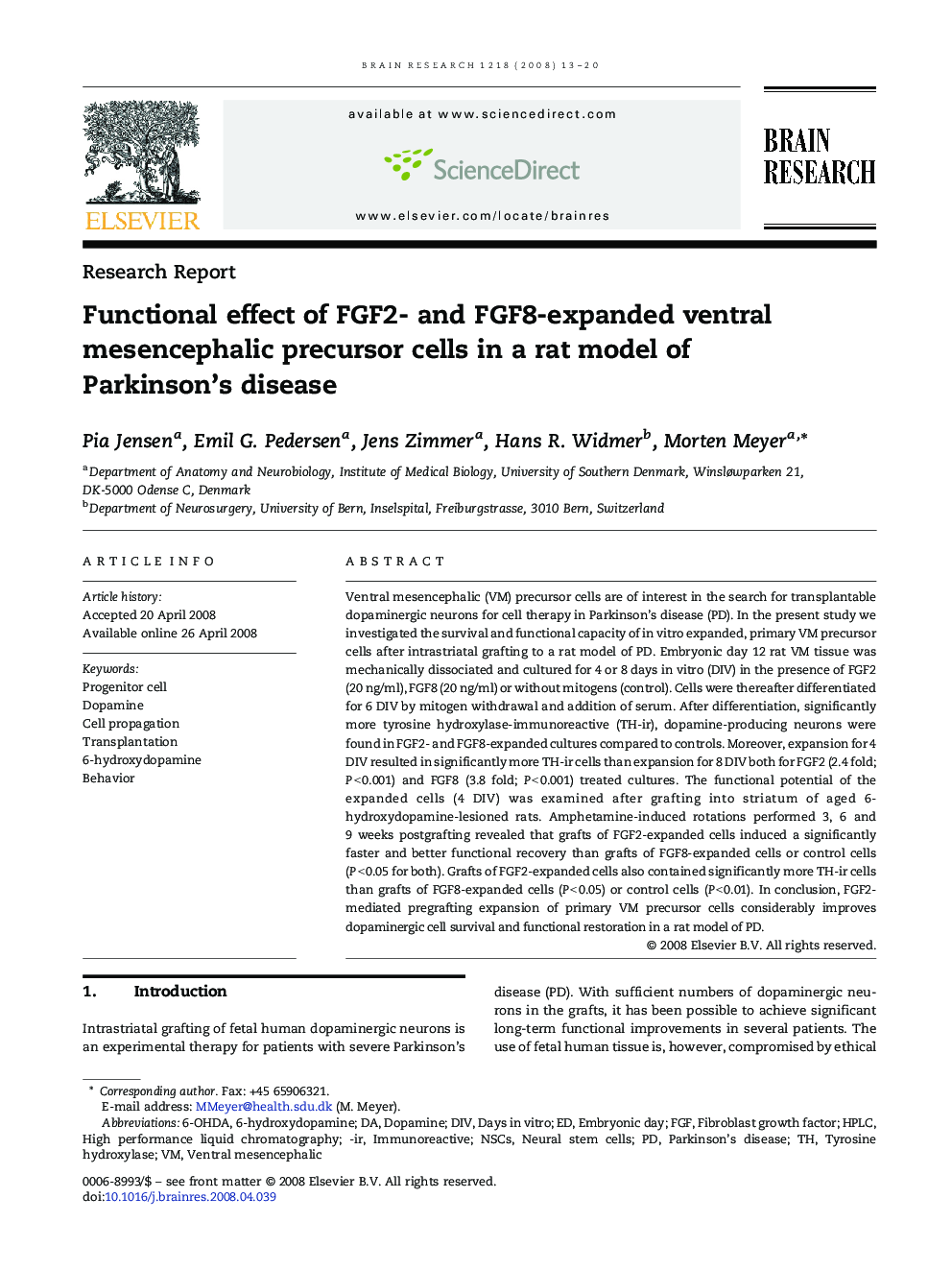| Article ID | Journal | Published Year | Pages | File Type |
|---|---|---|---|---|
| 4329579 | Brain Research | 2008 | 8 Pages |
Ventral mesencephalic (VM) precursor cells are of interest in the search for transplantable dopaminergic neurons for cell therapy in Parkinson's disease (PD). In the present study we investigated the survival and functional capacity of in vitro expanded, primary VM precursor cells after intrastriatal grafting to a rat model of PD. Embryonic day 12 rat VM tissue was mechanically dissociated and cultured for 4 or 8 days in vitro (DIV) in the presence of FGF2 (20 ng/ml), FGF8 (20 ng/ml) or without mitogens (control). Cells were thereafter differentiated for 6 DIV by mitogen withdrawal and addition of serum. After differentiation, significantly more tyrosine hydroxylase-immunoreactive (TH-ir), dopamine-producing neurons were found in FGF2- and FGF8-expanded cultures compared to controls. Moreover, expansion for 4 DIV resulted in significantly more TH-ir cells than expansion for 8 DIV both for FGF2 (2.4 fold; P < 0.001) and FGF8 (3.8 fold; P < 0.001) treated cultures. The functional potential of the expanded cells (4 DIV) was examined after grafting into striatum of aged 6-hydroxydopamine-lesioned rats. Amphetamine-induced rotations performed 3, 6 and 9 weeks postgrafting revealed that grafts of FGF2-expanded cells induced a significantly faster and better functional recovery than grafts of FGF8-expanded cells or control cells (P < 0.05 for both). Grafts of FGF2-expanded cells also contained significantly more TH-ir cells than grafts of FGF8-expanded cells (P < 0.05) or control cells (P < 0.01). In conclusion, FGF2-mediated pregrafting expansion of primary VM precursor cells considerably improves dopaminergic cell survival and functional restoration in a rat model of PD.
